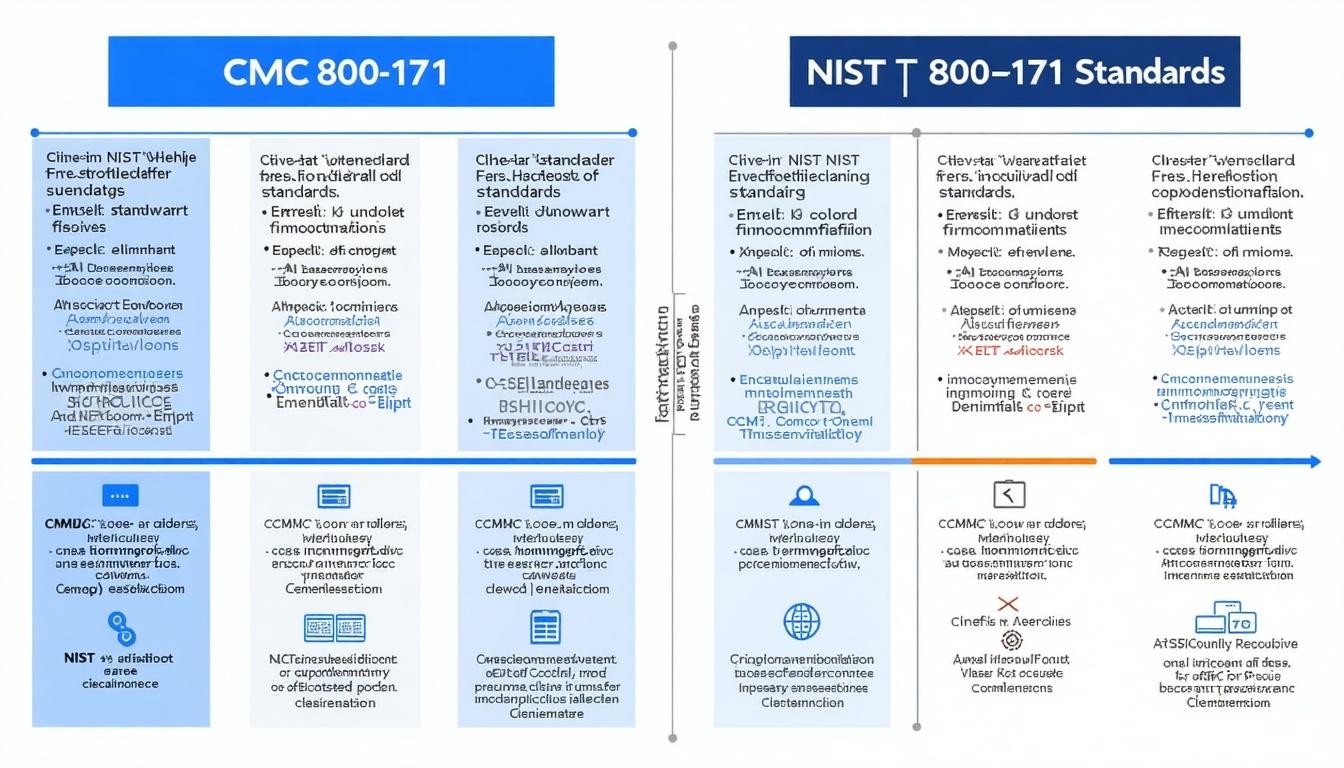
CMMC Vs. NIST 800-171: What’s The Difference?

Understanding the intricacies of cybersecurity standards is crucial for government contractors. CMMC and NIST 800-171 are two such standards that often cause confusion. This article aims to demystify their differences and guide your compliance journey.
Understanding CMMC and NIST 800-171: An Overview
The Cybersecurity Maturity Model Certification (CMMC) and the NIST Special Publication 800-171 are two critical frameworks in the realm of cybersecurity. Both are designed to protect Controlled Unclassified Information (CUI) within the defense industrial base. However, they serve different purposes and have distinct structures.
CMMC is a unified standard for implementing cybersecurity across the defense industrial base. It is structured into five maturity levels, each with specific practices and processes aimed at increasing cybersecurity maturity. On the other hand, NIST 800-171 provides guidelines specifically for protecting CUI in non-federal systems and organizations. It contains 110 security requirements organized into 14 families.
Key Differences Between CMMC and NIST 800-171
One of the key differences between CMMC and NIST 800-171 is their scope and application. CMMC is mandatory for all Department of Defense (DoD) contractors and spans multiple levels of cybersecurity maturity. It includes practices from NIST 800-171 as well as other standards like ISO 27001 and AIA NAS9933. In contrast, NIST 800-171 is specifically focused on protecting CUI and is a subset of the CMMC requirements.
Another significant difference is the certification process. CMMC requires a third-party assessment to achieve certification, whereas NIST 800-171 relies on self-assessment and self-attestation. This means that compliance with CMMC is externally validated, ensuring a higher level of accountability and rigor.
Compliance Requirements: What You Need to Know
For organizations looking to comply with CMMC, it is essential to understand the specific requirements for each maturity level. The higher the level, the more stringent the requirements. Companies need to conduct a gap analysis to identify areas that need improvement and develop a plan to address these gaps.
NIST 800-171 compliance, on the other hand, involves implementing the 110 security requirements and documenting these controls in a System Security Plan (SSP). Organizations must also conduct regular self-assessments to ensure ongoing compliance. Understanding these requirements and maintaining proper documentation is crucial for both frameworks.
Implementation Challenges and Best Practices
Implementing CMMC and NIST 800-171 can present several challenges, including resource constraints, technical complexities, and the need for continuous monitoring. To overcome these challenges, organizations should adopt a risk-based approach to prioritize their efforts based on the most critical vulnerabilities.
Best practices include conducting thorough training for staff, engaging with experienced cybersecurity consultants, and leveraging automated tools to streamline compliance efforts. Regularly updating security policies and procedures and staying informed about the latest cybersecurity threats and trends are also vital for successful implementation.
Future Trends and Evolutions in Cybersecurity Standards
The landscape of cybersecurity standards is continually evolving to address emerging threats and technological advancements. Future trends may include the integration of artificial intelligence and machine learning to enhance threat detection and response capabilities.
Additionally, there is a growing emphasis on supply chain security, with frameworks like CMMC 2.0 expected to introduce more robust requirements. Organizations must remain agile and proactive in their cybersecurity strategies to adapt to these changes and continue safeguarding sensitive information effectively.

